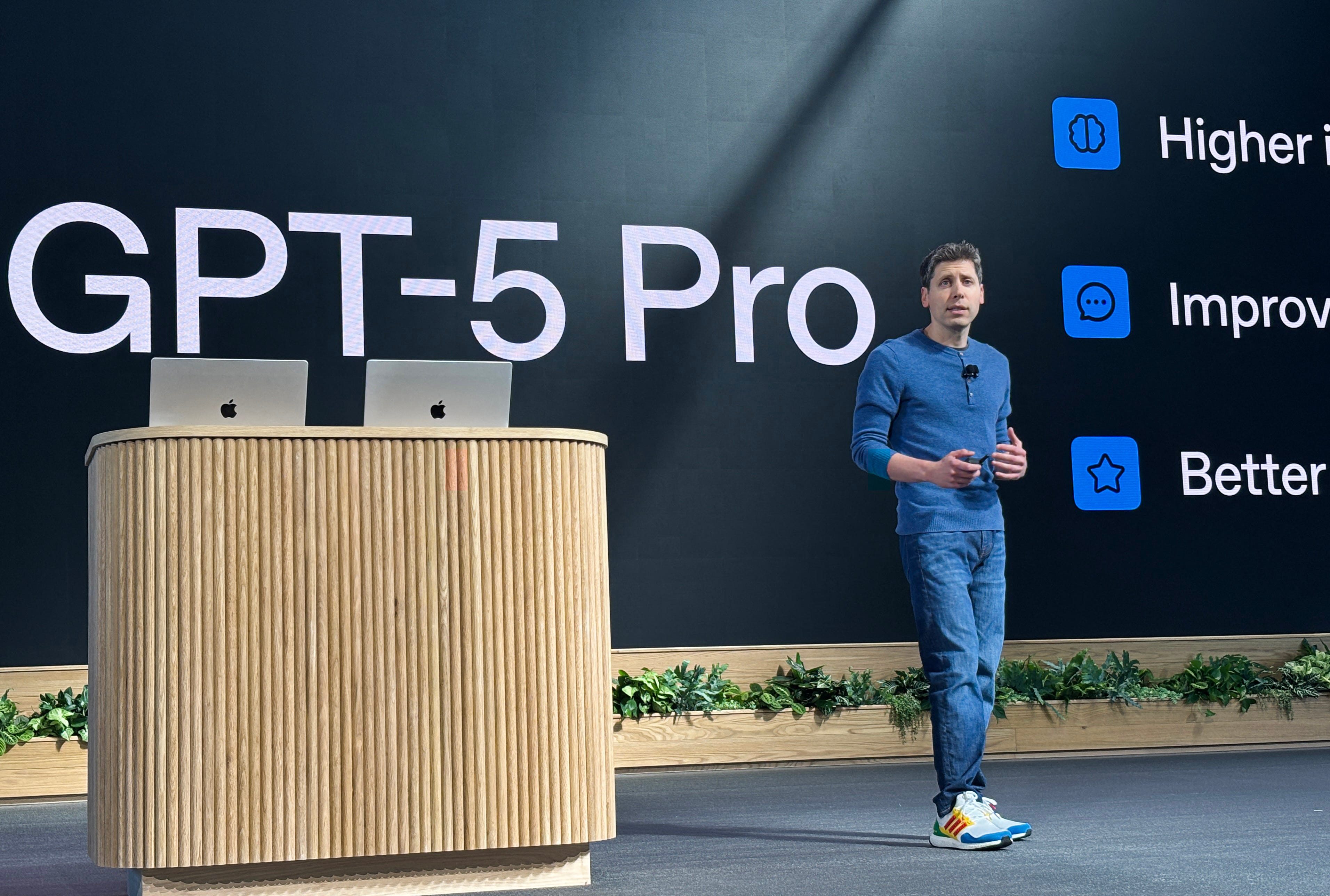
Benjamin LEGENDRE / AFP
- OpenAI has been on a dealmaking tear, as its partnerships with Nvidia and others top $1 trillion.
- Sam Altman shared the strategy behind the huge infrastructure bets and said OpenAI isn’t done yet.
- The OpenAI CEO said he changed his stance on having more control over the company’s supply chain.
OpenAI CEO Sam Altman is in his era of dealmaking.
Altman kicked off the week by announcing a blockbuster chip deal with AMD for its AI chips.
It follows massive AI infrastructure and compute deals with tech giants like Nvidia, CoreWeave, and Oracle, which have pushed the value of OpenAI’s dealmaking to $1 trillion this year alone.
Here are three things we learned about Altman’s dealmaking strategy for OpenAI this week.
OpenAI isn’t done with dealmaking
OpenAI’s 800 million weekly active ChatGPT users put it far ahead of its rivals. Its flurry of deals solidifies its position at the heart of the AI boom.
And Altman doesn’t appear to be finished.
“We’re going to partner with a lot of people,” Altman told “The A16z Podcast” in an episode that aired Wednesday. “You should expect much more from us in the coming months.”
Altman described the recent deals as a “very aggressive infrastructure bet” and said the rationale behind them was that the bet was so large that OpenAI needed “the whole industry, or a big chunk of the industry, to support it.”
He added that if its AI model capability reaches the level OpenAI anticipates, then the “economic value that sits there can go very, very far.”
In an interview published Wednesday with Stratechery analyst Ben Thompson, Altman said that while some may say the deals are too ambitious or risky, they will ultimately “all make sense.”
Altman sees OpenAI’s place in the market differently
OpenAI’s dealmaking has given the company closer ties with the companies that it relies on for chips and compute.
It’s a strategy that Altman says he wasn’t always aligned with.
Altman told “The A16z Podcast” that he was “always against vertical integration,” referring to a situation where a company controls multiple parts of its supply chain, such as a smartphone firm owning its production factories.
“And now I think I was just wrong about that,” Altman said.
Altman said the traditional economic theory of companies specializing in one area and the market efficiently connecting them has not fully applied to OpenAI, which has meant it has had to “do more things than we thought to be able to deliver on the mission.”
OpenAI’s revenue will pay for its big bets, says Altman
OpenAI structured its recent deals in ways that analysts have described as circular or self-funding.
Bernstein analysts said in a September research note that OpenAI’s deal to use Nvidia’s $100 billion investment to buy Nvidia chips will “likely fuel these worries much hotter than what we have seen previously.”
That’s raised the question of who will ultimately pay for these massive deals.
The answer is OpenAI’s revenue, Altman told Stratechery.
It’s not clear when OpenAI might — if ever — be in a position to do so. The company generated $4.3 billion in revenue in the first half of 2025 and a net loss of $13.5 billion, The Information reported last month.
Altman added that he views OpenAI, which has raised tens of billions of dollars in funding, as being well-positioned to assist other companies with financing.
“We are working on plans to be able to help with the financing these companies need at this kind of scale ahead of revenue,” he told Stratechery.
Read the original article on Business Insider
The post 3 things we learned from OpenAI CEO Sam Altman about his deal strategy this week appeared first on Business Insider.




